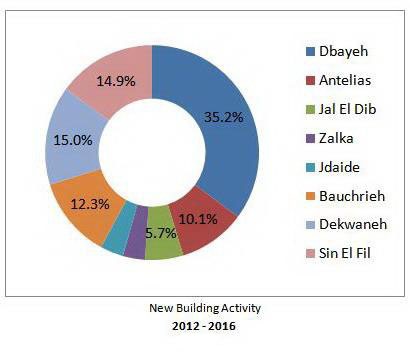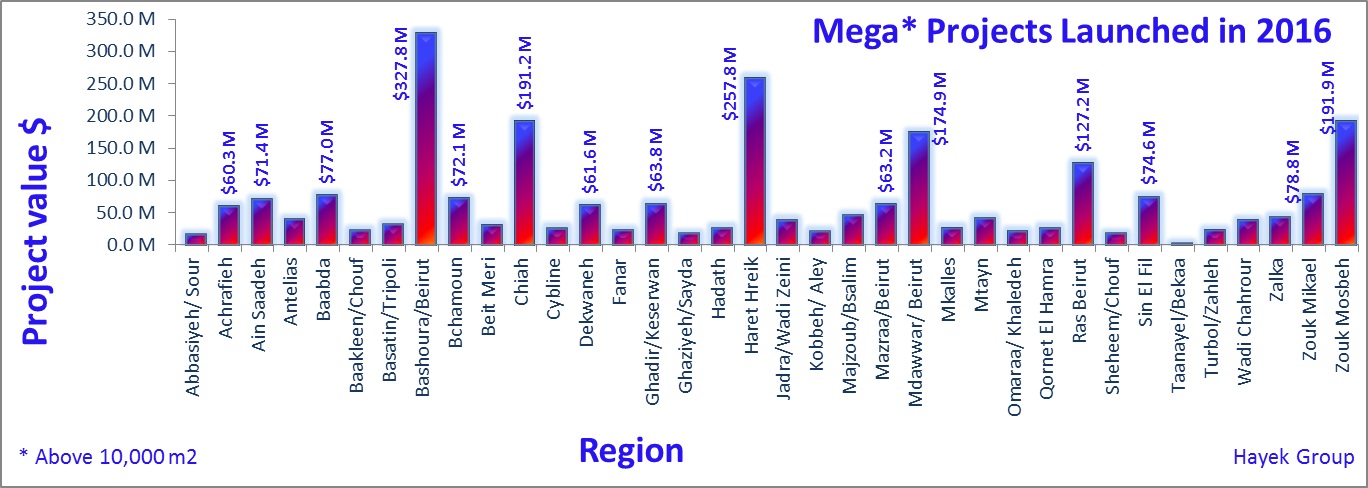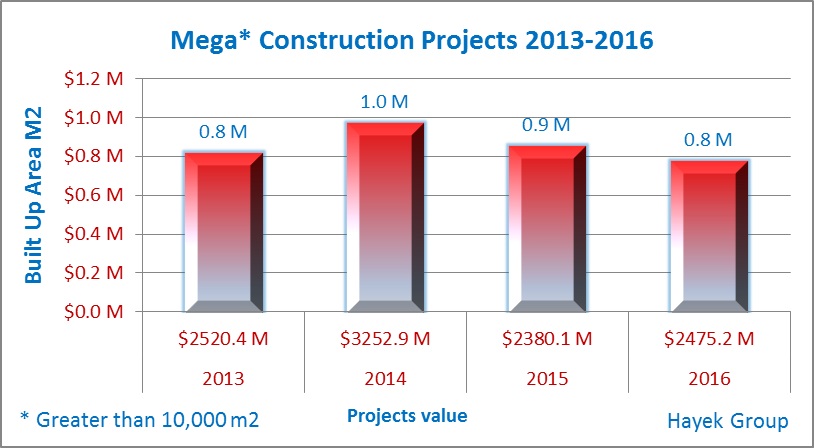Real Estate Market Analysis - June 2017
- Wednesday, October 16, 2019
 The Lebanese real estate market is undergoing corrective market stagnation; the importance of Market Analysis is going to increase to avoid non successful developments. Financing is becoming more difficult to acquire and regulatory considerations are becoming more complex. In the competitive world of real estate development, the investor with the best Market Study is going to be the most successful.
The Lebanese real estate market is undergoing corrective market stagnation; the importance of Market Analysis is going to increase to avoid non successful developments. Financing is becoming more difficult to acquire and regulatory considerations are becoming more complex. In the competitive world of real estate development, the investor with the best Market Study is going to be the most successful.
Market Analysis represents an essential entity which occurs at an early stage in the development analysis process. Practically, a Market Analysis concentrates on a survey and data of demand and supply that will create a market for a project at a given value.
The developer needs detailed data about the market before proceeding even to the preliminary design phase. The Market Analysis covers:
-
What are the best function, specification and size of units for the proposed development?
-
How many identical units are in the market, at what price and since what length of time?
-
What percent of market trend will the project capture and why?
-
 What is the expected new construction in the area?
What is the expected new construction in the area?
-
How much income can this project expect to generate over a certain time?
-
What are the regulations placed on this type of development?
-
What is the community’s position in the proposed location?
Market Analysis is basically used by:
-
Engineers, City planners & Architects
-
Developers
-
Private Banks
-
Public Sector
-
NGO’s
-
Education & Academics
What Are The Types Of Market Studies?
1. Best Use Studies
Developers will often do a best use studies when discussing project ideas. This study will be based mostly on data driven decisions and the developer’s experience of local market conditions.
2. Market & Feasibility Studies:
By assessing the potential for certain types of development, a developer can rule out those which have little potential for success and concentrate on those which may work out better. This is done by listing the inputs necessary for such a project and comparing those to obvious existing market conditions the developer can decide whether or not to proceed.
3. Appraisal
Appraisals are performed regularly by real estate professionals to assess the value of a site. They are typically based on market prices, the replacement costs of any improvements and present worth. More detailed appraisals will estimate an absorption rate (the rate at which a product is used in the market) for the site and the amount of potential market capture. Appraisals are used to set the value of property being used as collateral or to develop selling prices once the development project has been completed.
4. Cost- benefit analysis

Most cost-benefit analysis is performed by public agencies to assess the value of a project to the public. For example, will new adjacent road decrease traffic sufficiently to warrant the price? These analyses will focus on the amount of public investment and the production of public activities. While dollar values are important, social costs, which can be difficult to quantify, are also weighed. Estimates of investment return, absorption, market capture and timing are created. Private investors also may include a cost benefit analysis in their studies.
5. Analysis of economic base
An analysis of economic base creates projections for near-term growth for a geographic area, mostly created for use by planning and economic development agencies. Developers often use the figures generated to help assess potential demand for their projects. The analysis will assess potential opportunities and trends.

6. Analysis of economic impact
Economic impact confer how would a specific large scale project affect the local economy? The study will focus on economic contributions such as taxes, infrastructure or new services that a project will have in a geographic area. In the past it was assumed that all growth had a positive economic impact. As these studies have become more refined and have included previously externalized costs, the results show that some growth may cost more for community than the tax income it provides.
7. Land use study
Land use studies are a tool of land use planners. The study analyzes the geographic pattern of development in an area. Land use studies serve as the basis for many public policy decisions on issues such as land needs and infrastructure requirements. Data might also serve as the basis for zoning and the granting of variances. The information gathered in these studies can also be valuable for developers in that it describes existing market conditions.
8. Marketability study
Typically it is a portion of a Market Analysis, marketability studies describes the necessary prices, sizes, functions and features required to capture market share. The market study will examine comparable in the study area to see what scale and amenities will increase absorption and capture rates. The marketability study is mainly used to describe what conditions are necessary for the project to be successful.
9. Study of Highest and Best Use.
Studies of highest and best use outline the optimal use of a site. They are typically used when someone has a site, but is not sure how to obtain the highest possible return on their investment. Performed by market analysts for investors, property owners and lenders, these studies concentrate on a specific parcel of land and its relation to the community. Estimates of investment return, value, absorption and market capture are generated.
10. General Market Study.
General market studies are the most common type of analysis performed a market study for a development project will assess the existing demand and supply for a certain type of use or property in the market. General Market Analysis can be used by or created by any person in the development process. Typically, market studies will assess the potential return on the investment, absorption and market capture rates and the project's timing.
How does Market Analysis Performed?
.jpg)
Project development is important in all projects, but is especially important in a Market Analysis. During initial meetings and negotiations, the bounds of the study are set and the consultant-client relationship is defined. Making sure that the consultant and the client have a clear vision of the product and process may prevent major problems later on.
The goal of any market study is to find the point where supply and demand intersect to supply the right quantity of a product at the right price. Since the world is complex and dynamic, no economist can ever identify that exact point. A market analyst accumulates information on as many factors as possible to make a refined guess.
The refined guess of a Market Analysis is based on four basic components:
-
The project details,
-
A demand survey,
-
An assessment of supply,
-
A synthesis.
The first three steps review detailed market information and note the implications for the proposed project. The final stage draws conclusions from those implications.
The first step of a Market Analysis is the project description. In this section, the analyst lays the foundation for a defensible market study. The project description should perform four tasks:
1. Outlining the constraints of the study;
2. Listing the boundaries of the study;
3. Describing the project;
4. Evaluating indirect economic and site factors.

The factors affecting demand survey for a potential development are:
-
Population,
-
Income,
-
Employment,
-
Market trends,
-
Relative prices,
-
Taxes,
-
Interest rate,
-
Down payment requirements,
-
Future expectations.
Most analysts will concentrate on population, income and employment when performing a demand study. The number of people, their incomes and the type of jobs they hold will be the most decisive factors in measuring demand. By measuring trends for each we can create a statistical picture of the economy.
Supply is a function of the following factors:
-
Prevailing supply;
-
Intended supply;
-
Competitive environment;
-
Availability of land;
-
The cost of land, labor and capital.
Hayek Group has specialized in real estate research for over 35 years. Our flagship product is real estate Market Study for developers, lenders, and government agencies. In the studies, Hayek Group digs into the details of your project, with identification and analyses of the associated market data. The driving factors for the project’s success are analyzed, as is the buyer profile, amenities, locational positives and negatives.
Hayek Group process delivers what you need to accurately forecast marketplace performance. Our studies give you the advantage of a crystal clear forecast in a cloudy marketplace. We replace the element of surprise with the tools of success.
Hayek Group LLC
Abdallah Hayek P.E.
Beirut, Lebanon
June, 2017
Back To Newsletters